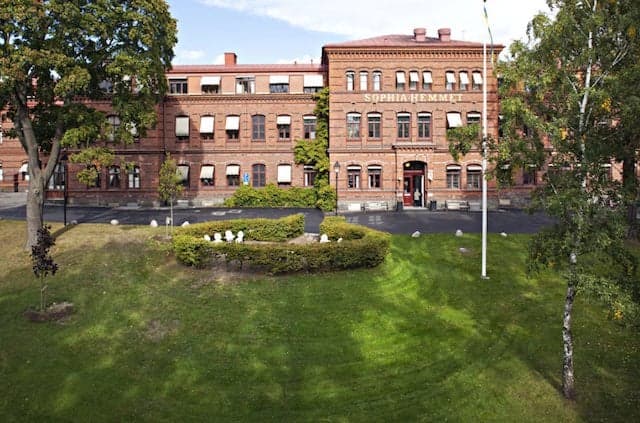Private and public healthcare in Sweden: The differences explained
Sweden’s public healthcare system is ranked among the best in the world, so under what circumstances would one choose to ‘go private’ instead?

Let’s begin with the basics.
In Sweden, there’s the country’s own equivalent of the UK’s NHS, with treatment that’s looked after by each county council and tax-funded. Consultations at your local healthcare clinic (vårdcentral) with a primary care doctor or a specialist in Sweden aren’t free of charge, but are heavily subsidised by each individual county.
Here’s where it gets a bit complicated. There’s no hard-and-fast rule around where you find public and private healthcare in Sweden -- often you’ll see them working out of the same centre. Some clinics are run independently but have an agreement with the region and receive funding from the local county.
For example, at Sophiahemmet, an independently-run hospital in Stockholm, 40 different care providers operate across the institution. Most clinics within Sophiahemmet offer three different payment options: publicly-funded treatment where you pay the standard subsidised fee; treatment paid for by an insurance company (always check with your provider first, as they will make the assessment and booking); and private treatment where you are personally responsible for the amount in full.
Find out more about Sophiahemmet Hospital
So, going to see a practitioner at an independent hospital like Sophiahemmet can cost no more than going to your local vårdcentral. The doctors are paid by the county directly and patients just pay the normal fee.
If you’re in Sweden with a European healthcare card (an EHIC) or a Swedish personal identity number (personnummer) you’ll be entitled to public healthcare at the same cost and through the same procedure as a Swedish native.
 Åsa Larsson, Sophiahemmet. Credit: David Bicho
Åsa Larsson, Sophiahemmet. Credit: David Bicho
But if you’re in Sweden on a shorter-term basis, without a personal identity number or an EHIC, going private gives you options. “You don’t have to be registered as living in Sweden to go to a private provider,” says Åsa Larsson, hospital manager at Sophiahemmet. “You either pay directly, or, if you have global health insurance, you’ll be covered.”
Private: good for speed, consistency of care and communication
While Sweden offers a public healthcare guarantee (vårdgarantin) that means that you’ll see a specialist within 90 days of being referred, for those looking to be seen without a delay, private care often wins out.
“In the private sector you’re likely to see a medical professional much more quickly than you would if you were to stay within the public sphere,” says Keith Hedge, an allergy specialist working both publicly and privately in one of Sophiahemmet’s specialist clinics.
And it’s not just about speed – the private sector tends to have a lower turnover of doctors, resulting in a greater consistency of care. Patients will have a dedicated professional who knows their case from beginning to end and understands their specific situation. This is always the case at Hälsocentralen in Sophiahemmet, a GP-style clinic where private and insurance patients get an appointment within a day or two as well as more time with the doctor.
Hedge notes that, “For people who don’t want to have to explain their background each time they go to the doctor, seeing the same specialist throughout their care is a big plus.”
Language barriers can also prove tricky when negotiating an unfamiliar medical system; an added attraction of the private system for many is the use of English as the common language. Larsson considers the prevalence of English spoken by staff and patients at Sophiahemmet to be “part of the reason lots of international people come to us.”
 Keith Hedge, Sophiahemmet. Credit: David Bicho
Keith Hedge, Sophiahemmet. Credit: David Bicho
Find out more about Sophiahemmet Hospital
In an emergency, opt for public healthcare
In the event of any serious and urgent medical issues, Sweden’s public system remains the first port of call.
“Giving Sophiahemmet as an example, if somebody has a disease like lung cancer, they’d be treated within the public system,” Hedge explains. “Sometimes we discover severe illnesses here and have to refer them back to public providers. Any emergency cases we can’t deal with, so in those instances you should always go to casualty (akutmottagning).”
For life-threatening emergencies, you should call freephone 112 for ambulances, police and the fire services. You can visit one of Sweden’s public hospitals that offer round-the-clock emergency care. There’s a fee for visiting these hospitals, ranging from 220 to 400 kronor.
The choice is yours
When it comes to deciding between private and public healthcare in Sweden, it’s about arming yourself with the knowledge and selecting the most appropriate path for your own needs.
For Larsson, it’s a matter of preference: “We’re in a position of privilege here in Sweden; we have a fantastic public health service, but we have the freedom of choice, too.”
This article was produced by The Local Creative Studio and sponsored by Sophiahemmet.
This content was paid for by an advertiser and produced by The Local's Creative Studio.

Join the conversation in our comments section below. Share your own views and experience and if you have a question or suggestion for our journalists then email us at [email protected].
Please keep comments civil, constructive and on topic – and make sure to read our terms of use before getting involved.
Please log in here to leave a comment.